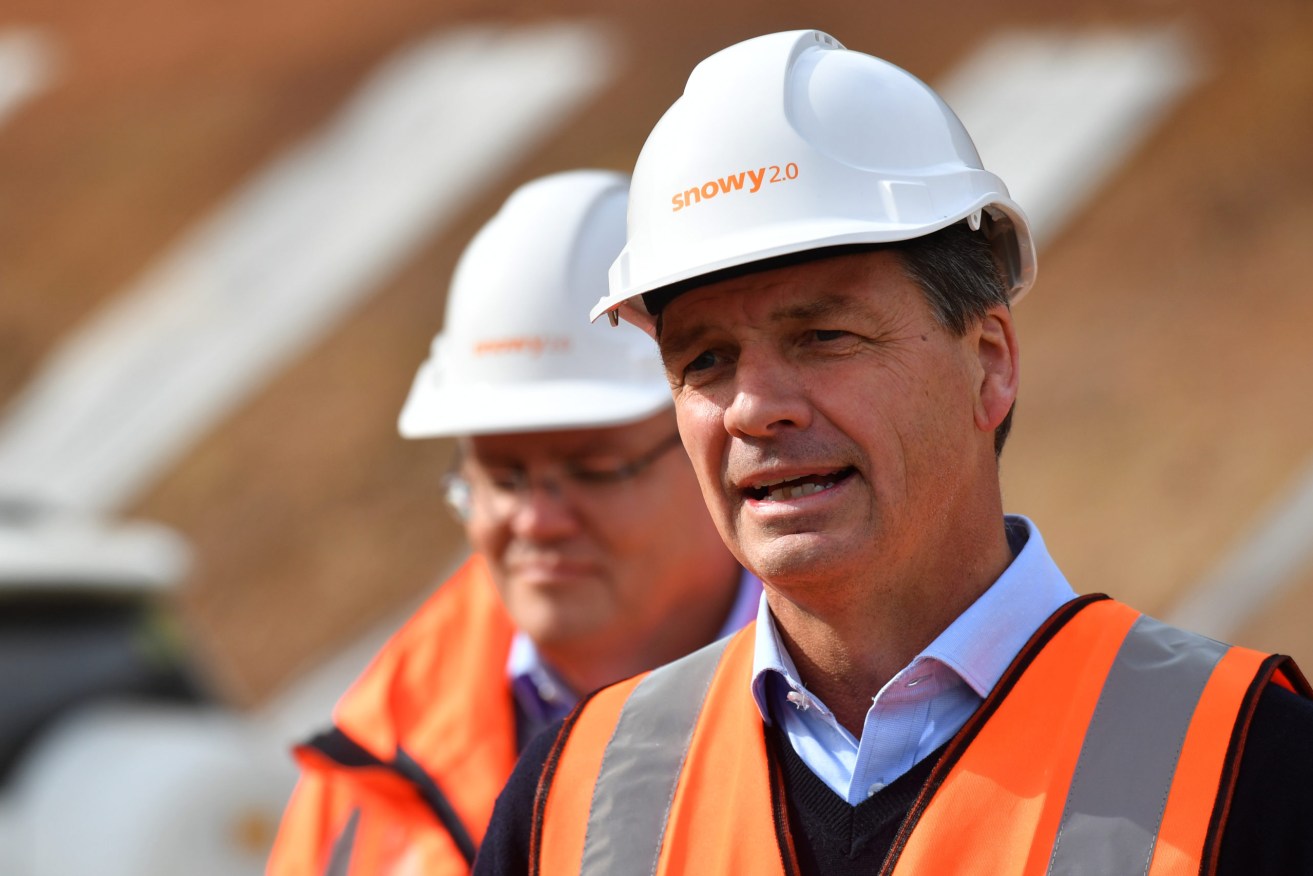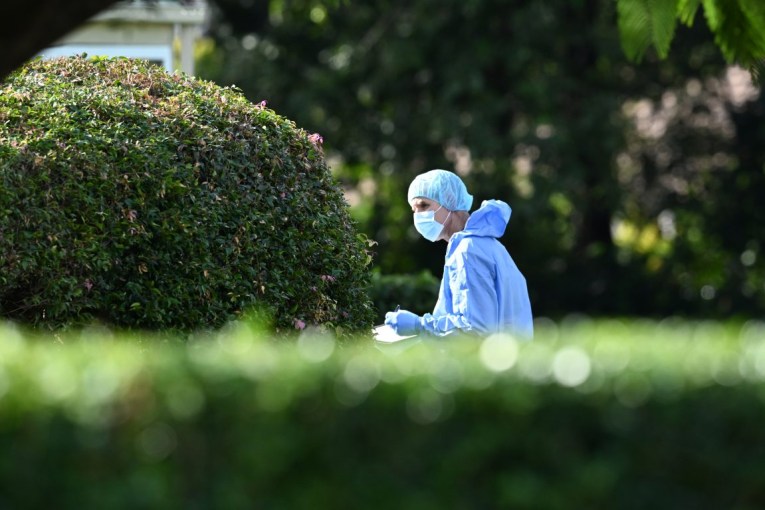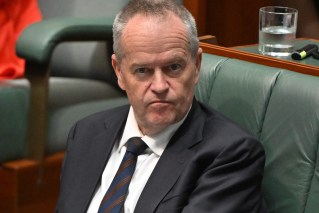Clean power future on the cards, only not yet
As the International Energy Agency plots a path to cleaner power, the Australian government has announced $600 million for a gas power plant.

Minister for Energy Angus Taylor and Prime Minister Scott Morrison at the Snowy 2.0 project at Lobs Hole in the Snowy Mountains. (AAP Image/Mick Tsikas)
Prime Minister Scott Morrison is pressing ahead with a new gas-fired power plant in the NSW Hunter Valley, despite a major report calling for an end to investment in fossil fuel technology.
Government-owned Snowy Hydro Limited has been given up to $600 million to construct a 660MW open cycle gas turbine at Kurri Kurri, on the site of an old aluminium smelter.
Energy Minister Angus Taylor said the project would create up to 600 new jobs during peak construction and 1200 indirect jobs across NSW.
However, it will require only 10 jobs when operating.
Along with the EnergyAustralia Tallawarra gas plant, it is expected to be generating power in time for summer 2023-24 when AGL’s Liddell plant closes.
Taylor defended the market intervention.
“There are times when governments need to step in to make markets work,” he said on Wednesday.
Environmentalists have already panned the idea, saying gas should no longer have a place in the energy grid as Australia sought to cut its emissions.
An environmental impact statement released last week said a new gas pipeline may not be ready in time for the plant to start operating in 2023, which meant it could initially require diesel fuel.
The project announcement comes as the International Energy Agency said reaching zero net emissions by 2050 would require a massive transformation of the global energy sector.
New investment in projects that use fossil fuels would have to stop immediately, which would put an end to any expansion in the sector.
Two-thirds of the world’s energy would be based on wind, solar, bioenergy, geothermal and hydropower by 2050, while cars would almost all be fuelled by electricity and air travel with biofuels and synthetic fuels.
Taylor denied the new gas plant was out of step with the report, insisting the site would complement renewable sources.
However, Bruce Robertson from the Institute for Energy Economics and Financial Analysis said the report clearly signalled the end of gas.
“The report finds that no new gas fields are needed and neither are many of the liquefied natural gas liquefaction facilities currently under construction or in planning,” he said.
“Between 2020 and 2050, it is estimated that gas traded as LNG will fall by a whopping 60 per cent.”
Taylor said new gas supply and generation would strengthen the economy and make energy more affordable, while complementing the “world-leading levels of renewables” in Australia.
Climate Council research head Simon Bradshaw said the IEA report added to a growing body of evidence that Australia’s gas-fired recovery was “unnecessary and dangerous”.
“Australia has everything we need to be a global renewable energy superpower and create good jobs in new clean energy industries,” Mr Bradshaw said.












